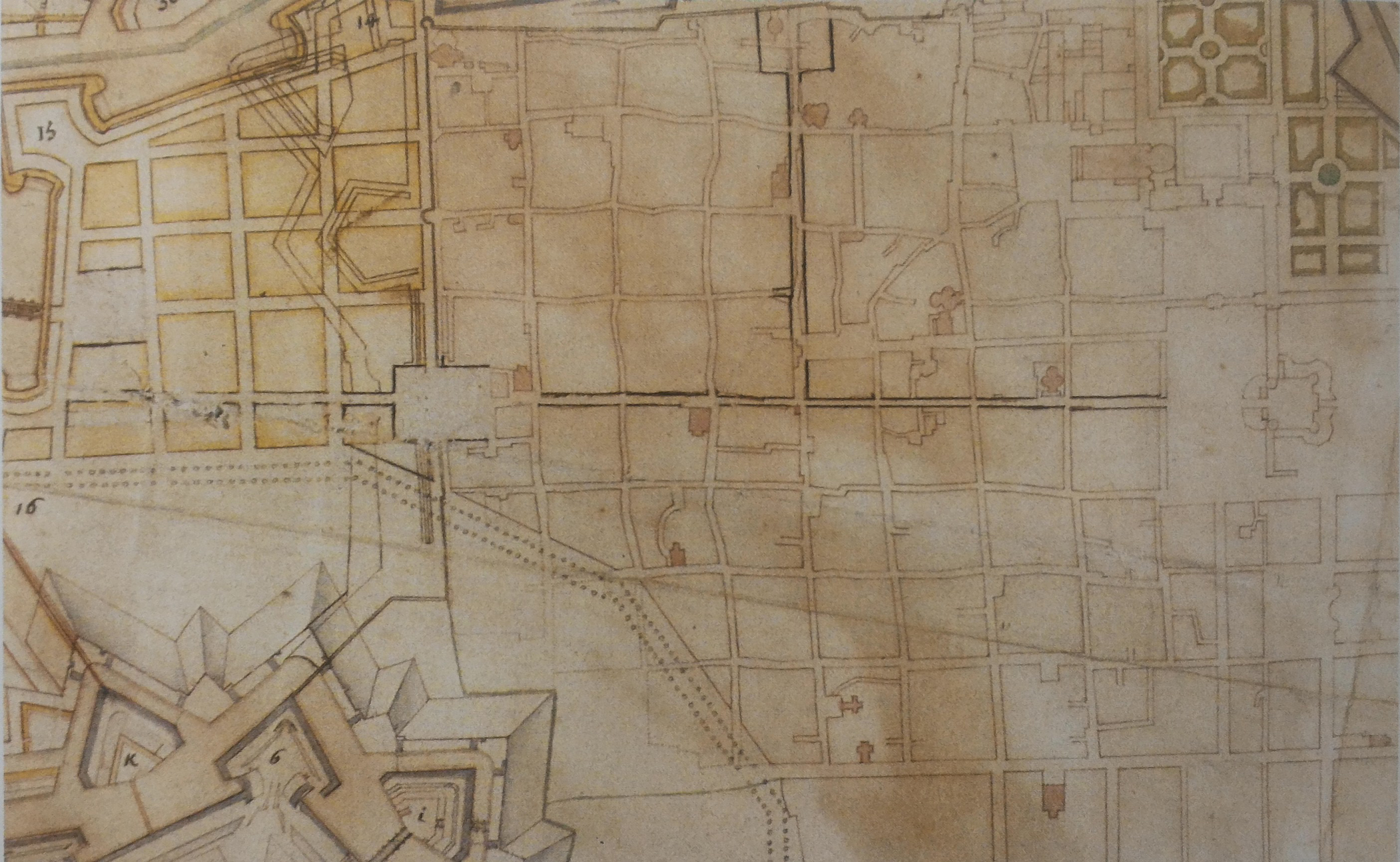
Di a cura di Andreina Griseri e Giovanni Romano, Filippo Juvarra a Torino, Torino 1989 da Archivio di Stato di Torino
Idee e progetti per la parte nord-ovest della città
Già dalla fine del XVII secolo era emersa la necessità di intervenire nell'area nord ovest della città, modificando il denso e malsano tessuto medievale. Dopo gli ampliamenti verso sud e verso est, era tempo di ristrutturare anche quella parte della città per dotarla di un impianto architettonico unitario. Sullo spazio reso libero dalla demolizione delle mura cinquecentesche viene ipotizzata una nuova lottizzazione, in continuità con la maglia ortogonale della città antica. Si riprende l'idea, già perseguita, di valorizzare la via della Dora Grossa, (via Garibaldi) attestata su Palazzo Madama, così come la strada di Porta Palazzo (via Milano), verso Milano e la porta nord.
Nel disegno di inizio Settecento, prejuvarriano, si individuano, all'interno del tessuto medievale, gli assi principali per la ristrutturazione e lo sviluppo della città: via di Porta Palazzo e via Dora Grossa.
Calendario eventi:
Centri urbani
